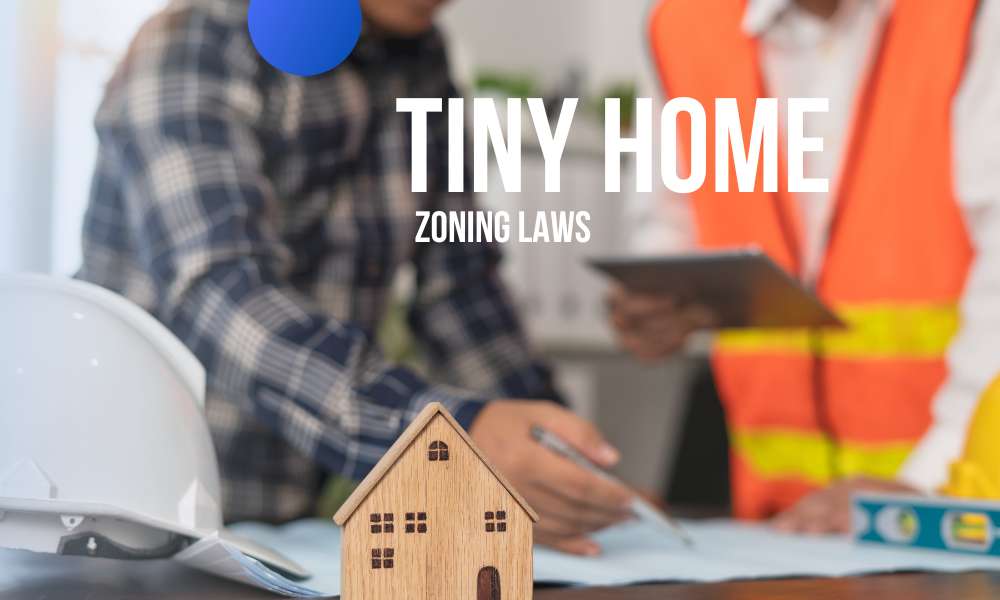Introduction
The rise of the tiny house movement in the United States has captured the imagination of many individuals seeking an alternative and more sustainable way of living. Take for example Boxabl. The company has been disrupting the tiny house space for the last few years. However, the dream of owning a tiny home often collides with the complex world of zoning laws. These laws, which vary from state to state and even within communities, pose significant challenges for tiny house owners across the country. This article explores the impact of zoning laws on U.S. tiny home buyers, highlighting the obstacles they face and the strategies they employ to navigate these hurdles.

Varying Zoning Ordinances
Zoning ordinances differ widely across the United States, making it difficult for tiny house enthusiasts to find suitable places to live. What might be permissible in one state could be prohibited in another, and even within communities, regulations can vary significantly. This lack of consistency creates uncertainty and frustration for those aspiring to join the tiny house movement.
Collaboration with Local Governments
To overcome zoning challenges, tiny house owners often find themselves engaging in a delicate dance with local governments. They must advocate for and work towards the creation of tiny-house-friendly ordinances that allow for the legal placement of their homes. This process requires extensive research, negotiation, and community involvement, which can be time-consuming and emotionally draining.
Evictions and Forced Relocation
Many tiny-house owners face the harsh reality of evictions and forced relocations due to zoning conflicts. Local authorities may deem their tiny homes non-compliant with existing regulations, leaving owners with no choice but to uproot their lives. This upheaval disrupts the sense of stability and sustainability that the tiny house movement promises.
Square-Footage Requirements
Traditional tiny houses on wheels, which are a popular choice among tiny home buyers, may not meet the minimum square-footage requirements for full-time dwellings. These restrictions prevent individuals from legally occupying their tiny homes as permanent residences. As a result, they face barriers to obtaining the necessary permits and enjoying the benefits of living in their chosen abodes.
Classification as Recreational Vehicles
Zoning regulations frequently classify movable tiny houses as recreational vehicles (RVs). While this classification allows for mobility and flexibility, it also limits their placement to designated RV parks or campgrounds. This restriction curtails the options available to tiny-house owners and restricts their ability to choose their preferred communities or neighborhoods.
Changing Local Ordinances
Despite the challenges, there have been instances where tiny-house owners have successfully advocated for changes in local ordinances. Through grassroots efforts and community involvement, they have managed to influence zoning regulations to allow for more parking options and accommodate the needs of tiny homes. These success stories provide hope and inspiration for others facing similar obstacles.
Resorting to RV Parks and Tiny-House Communities
In response to restrictive zoning laws, some tiny-house owners have sought refuge in RV parks or tiny-house communities. While these options offer a legal means of living in a tiny home, they come with their own challenges. Limited space, a lack of privacy, and dependence on external amenities can diminish the autonomy and self-sufficiency that attracted individuals to the tiny house lifestyle.
Living Under the Radar
Regrettably, living under the radar and evading zoning conflicts has become a common strategy for some tiny-house owners. By choosing to occupy their tiny homes discreetly, they attempt to avoid scrutiny and potential legal repercussions. However, this approach often involves sacrificing access to essential services and may lead to a constant state of uncertainty and vulnerability.
Examples of Tiny House-Friendly Communities
Despite the hurdles, there are towns and communities that have successfully embraced the tiny-house movement. These forward-thinking areas have implemented zoning ordinances that accommodate tiny homes, allowing residents to live legally and enjoy the benefits of this unique lifestyle. These examples serve as models and demonstrate the possibility of harmonizing tiny homes with existing communities.
Conclusion
The complexity of zoning laws in the United States makes the dream of owning a tiny home difficult. Tiny-house-friendly ordinances, evictions, limited placement options, and the need to live under the radar are among the many hurdles faced by tiny-house owners. While there are success stories and examples of communities embracing the movement, addressing the issue of zoning laws at a broader level is essential to ensuring the growth and sustainability of the tiny house movement. Efforts should be made to promote consistency, flexibility, and inclusivity in zoning regulations to foster a future where the aspirations of tiny home buyers can be fulfilled.
Want to invest in a tiny house? Try Boxabl
